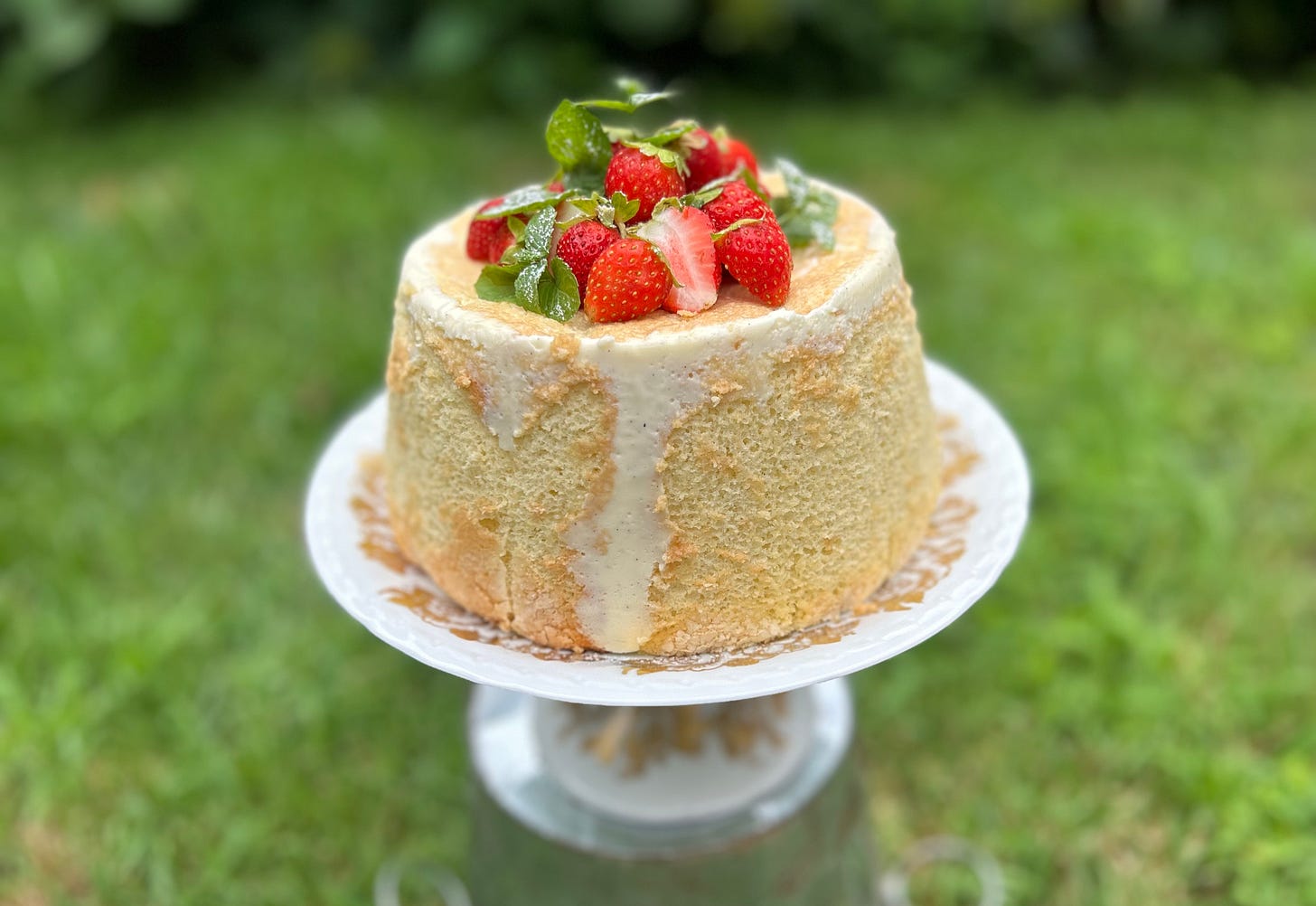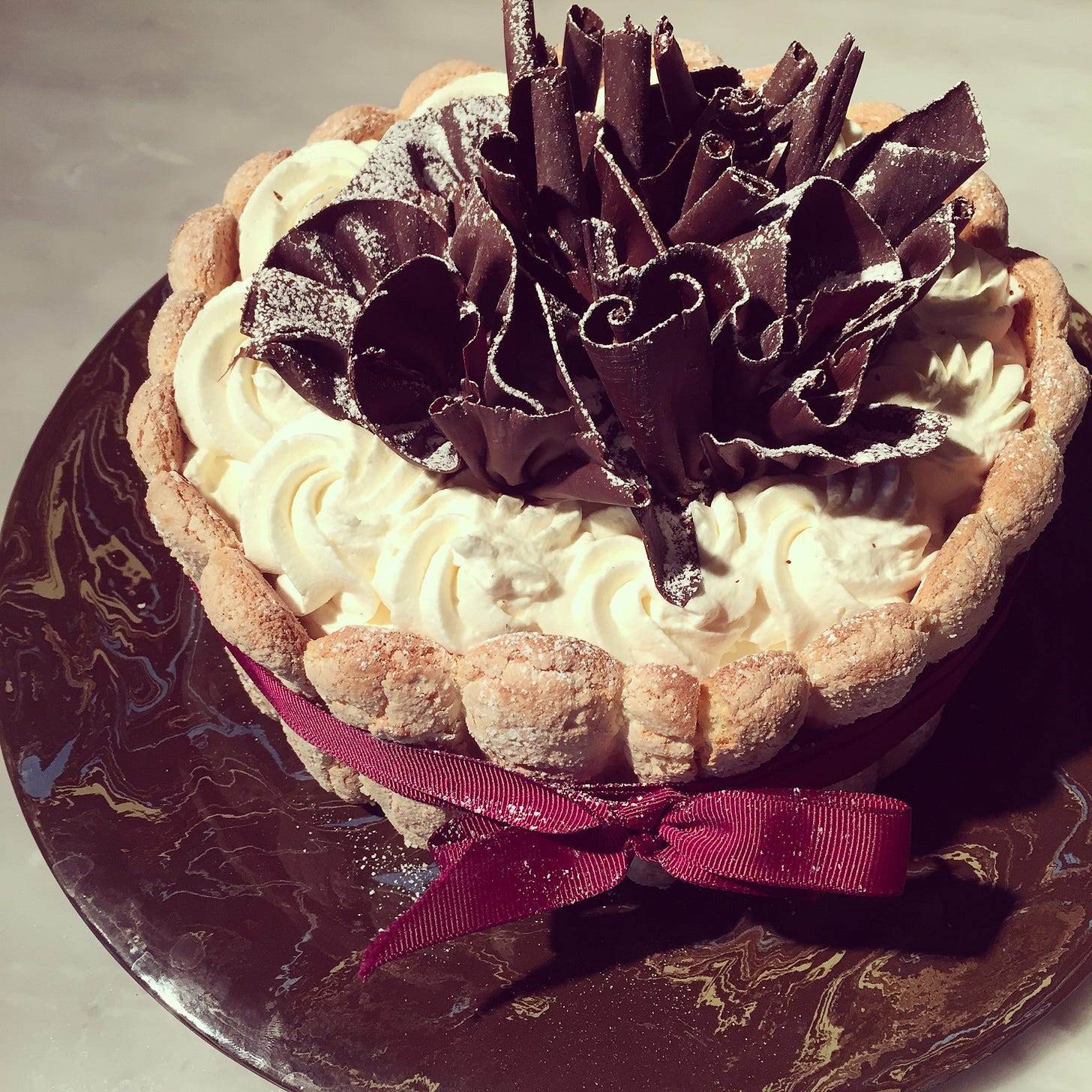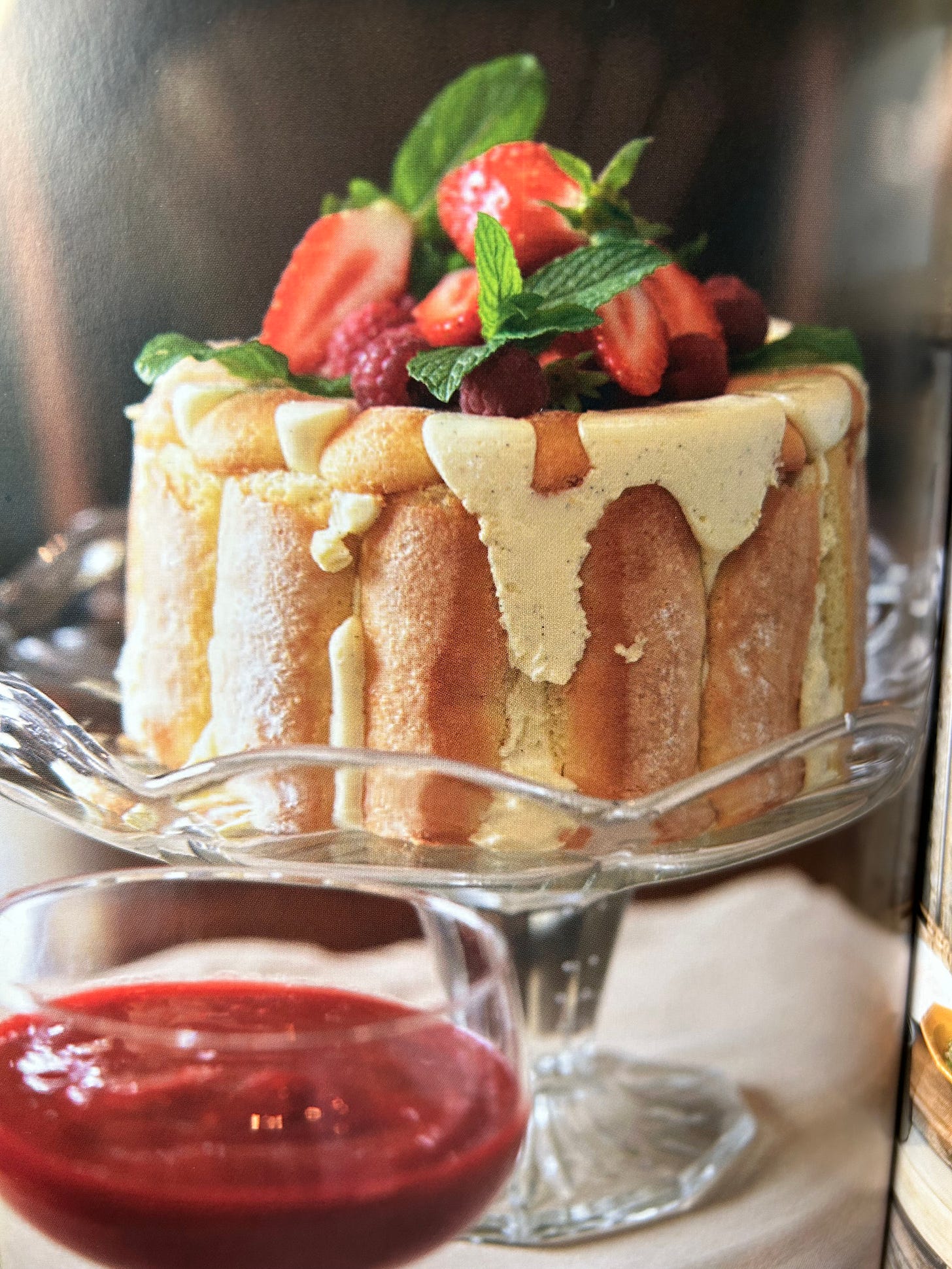I’ve told a few stories here on Substack about my time working in Lyon in the summer of 1989. The 80’s was the era of the mousse cake so by 1989, we were in full mousse-cake mania, with chefs like Pierre Hermé and Lucien Pelletier turning out beautiful cakes with day-glow colours, striped cake ribbons, and glazed tops decorated with fruit or sugar flowers. It was the era of pretty pastry where every cake looked like a hat box out of Gigi’s closet
As gorgeous as those cakes were, their flavour often left a lot to be desired, and their mushy mouthfeel was rarely contrasted with a texture other than equally mushy alcohol-imbibed layers of sponge cake. I made so many that to this day, the base recipe of 1 kg fruit purée, to 1 kg of Italian meringue, to 1 kg of whipped cream held together with 15 gelatin leaves is still lodged in my brain some 30 years since I worked as a pastry chef.
The summer I worked in Lyon, I spent most of my days in the cake and pastry department, and when I say department, I mean there were two of us, me and a fellow named Richard who was known for keeping an immaculate fridge and for being a bit too serious for the rest of the team. Richard and I made all the cakes and pastries, and the first we made together was a Charlotte vanille aux fraises et kiwis. We began by making the lady fingers, then we lined the moulds with the lady fingers and finally we made a vanilla Bavarian cream which we ladled into the lady-fingered-lined moulds. What’s Bavarian cream? It’s a crème anglaise in which gelatin is added and once cool, enriched with cold whipped cream, resulting in a lovely not-too-firm, vanilla mousse of sorts which can be served solo or layered with other flavours.

Our charlotte was layered with sliced strawberries and kiwis and, once chilled, the cake was unmoulded and decorated with more sliced strawberries and kiwis. It wasn’t a revolutionary cake in any way, but boy was it good and it contained enough lady fingers to contrast the mousse. I loved it.
The history of the charlotte cake is quite interesting. Created in the early 19th century as a tribute to King George III's wife, Queen Charlotte, the first version of this cake was made in a high mould with flared edges that was lined with buttered brioche and filled with a fruit compote, usually apples or plums, which was then baked in the oven.
This style of cake was eventually adapted in the 1800’s by the great French pastry chef Antonin Carême, who imagined it in a cold version where the mould was lined with lady fingers (doigts de dame or biscuits cuillère in French) and filled with Bavarian cream.
Back then the dessert was commonly known as charlotte à la parisienne, but when Carême later worked in the employ of Tsar Alexander I of Russia he rechristened it charlotte à la russe. Charlotte russe is a term rarely seen anymore as modern charlottes have taken on many forms: baked, chilled or even frozen, when it is often called a vacherin. I’ve made countless charlottes, a favourite for Christmastime being a chocolate charlotte filled with chocolate mousse and topped with swirls of whipped cream and chocolate curls.
While recently contemplating summer dessert ideas, I came across a strawberry charlotte in the book Comment briller aux fourneaux, sans savoir faire cuire un oeuf by French food star, Julie Andrieu in which she cooks with legendary Nouvelle Cuisine chef, Michel Guérard. It’s little know that Guérard, famous for inventing cuisine minceur, began his cooking career as a pâtissier, which might explain the beauty of his plate presentations (I never miss an opportunity to laud a pasty chef).
Guérard’s charlotte is pretty old-school, in that he makes it in a charlotte mould, whereas I always made them in a standard ring mould. He also uses individual lady fingers, which is fine, though pastry chefs usually pipe lady fingers in wide band (see the chocolate charlotte above) so that you can line a mould with a strip of them instead of placing them in one by one.
Of course, lady fingers are tricky to make yourself because they call for a bit of dexterity with a pastry bag, so feel free to use store-bought “boudoir” biscuits, which can be found in any Italian special shop or any large supermarket. I’ve used them for home recipes and they work well, so don’t hesitate to make the charlotte if you aren’t a whiz with a pastry bag.
Another option for this recipe is to simply make the bavarian cream and pour it into a bowl, then serve it with cut strawberries alongside and the coulis. You can even pour it into individual serving cups, or layer it in a glass bowl with jam and sponge cake to make a trifle.
Bavarian cream is a terrific recipe to master because you end up with a slightly gelatinized dessert with a more interesting flavour and texture than a panna cotta. Also, as the base ingredients are the same as in a custard-based ice cream, you’ll end up with a dessert that tastes like ice cream but does not require churning.
If you’re up for it you can go really old-school and pour the Bavarian cream into a decorative mould, freeze it and unmould it and you’ll have a very pretty dessert. I’ll make one of those before summer’s end and post the results here. It’s really trippy and can be served with fruit coulis or better yet, warm chocolate sauce. Yum!

No doubt, Monsieur Carême would approve!
A note about the charlotte: as pictured at the top of this post, you’ll see my charlotte has a more cake-like look than the individual lady fingers. That’s what happens when you make a the cake in a charlotte mould and use very fresh lady fingers. The condensation makes the cake stick to the sides a bit and you lose the pretty pattern. Because most people don’t have a charlotte mould, I recommend using a ring mould in the recipe below. Also, with a ring mould, the cake won’t get as moist and stick to the sides, which also won’t happen with a drier biscuit. And if it does, big deal. It makes it look more like an English summer pudding and it’s just as delicious.
Vanilla and Strawberry Charlotte
Serves 8
Keep reading with a 7-day free trial
Subscribe to Lick my Plate to keep reading this post and get 7 days of free access to the full post archives.









